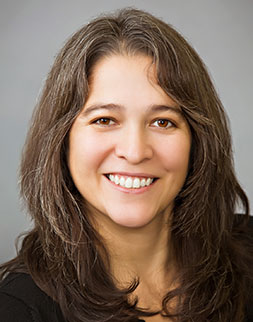With more than 90 percent of California students poised to begin the school year virtually, it is more important than ever to address the digital divide so that every student has the opportunity to fully participate in distance learning. Innovative examples are out there, including East Side Union High School District, which has partnered with the city of San Jose for the past several years to bring free WiFi to not only students, but to everyone within their district boundaries, and is about halfway to their goal. Desert Sands USD in Riverside County formed a public-private partnership, identified areas in the district where WiFi was not reaching and retrofitted old microwave towers to reach those areas — all while following strict E-rate regulations (read more about Desert Sands in the At Issue feature in the spring 2020 issue of California Schools magazine.) These forward-thinking solutions have greatly benefitted the students in these communities and should inspire districts to begin thinking of long-term solutions; however, time and funding are not on our side for the 2020–21 school year.
Here in Azusa Unified School District, staff are spending the summer break preparing for a return to robust distance learning. Near the end of the last school year, we convened a “Reopening School Imagination Team” with broad representation from administrators, employees, our bargaining units, and, most importantly, parents and students. Over the last few years of Local Control and Accountability Plan stakeholder engagement, we have come to value and center our decision-making with the voices of parents and students. We are building on lessons learned during the unexpected shutdown of schools in the spring and the subsequent and unplanned switch to distance learning.
It is of the utmost importance that we provide equitable education to our most vulnerable students. Last spring, Azusa USD distributed over 5,000 devices to students for use in accessing curriculum and instruction. District staff assisted families in connecting to the internet through special programs offered by service providers. Twenty-four families experiencing severe challenges in accessing the internet were provided district WiFi hotspots/internet access. A dedicated technology support email and phone line connected families with support for technology use at home. Resource teachers and interventionists provided English learners, low-income students and foster youth with additional academic support through online live instruction, teleconference meetings, and through Google Classroom (where students could access assignments in their own time frame). The additional support focused on helping students meet grade-level standards and helping families with resources and strategies to support learning at home, as well as access to additional academic support through partner organizations. Designated and integrated English Language Development, monitoring of academic progress, and reclassifications continued for English learners during the COVID-19 emergency. In addition, Azusa USD staff contacted all newcomer students to support in continuing their education through distance learning.
Our response in the spring was one of emergency — I am proud of the work our district staff undertook, and I am proud of the way our staff, families and community rallied to continue the education of our students — everyone put in a yeoman’s effort. However, it wasn’t enough — and we all need to ask more of ourselves in the upcoming year, especially in light of the fact that the majority of schools will be using distance learning for the foreseeable future and until our counties get the community infection rate under control.
In collaboration with our bargaining units and families, Azusa USD is planning to resume school virtually, but in the spirit of Senate Bill 98. The required daily minutes of instruction will be conducted through live interaction (synchronous). We have built in collaborative teacher planning time on Mondays — at the beginning of the week when teachers are fresh from the weekend — instead of on Fridays. We have built in dedicated time before and after the regular instruction time for teachers to work with English learners for designated English Language Development and for additional supports for special education students four days a week (Tuesday–Friday). And the last half hour of the teacher’s day, Tuesday through Friday, is dedicated to “Family-School Connections,” that will allow teachers and families to connect directly about individual students. We are planning to assess students individually so that teachers know where gaps may exist — not to “remediate,” but so that teachers know where to shore up and backfill learning while still keeping to the rigorous grade-level standards that we expect all students to learn, whether in person or virtually.
There is so much planning and preparation going on that it could fill a book, so I only mention these few actions because they are core to our equity-based response. Daily synchronous instruction, additional supports for students with extra needs, family partnership for learning and decision-making — these are critical components of our response to a pandemic that none of us could have imagined landing on our doorsteps and that isn’t going away anytime soon.
As we all know, there is no precedent, no road map, no established best practices to turn to as we navigate our way through a global pandemic that has affected each and every one of our lives. I encourage you to share what has been working in your district or county office of education with your fellow board members as well. By learning from and with one another, we can emerge from this crisis with a stronger school system that works better for every student. To share your innovative local educational agency practices, please email editor@csba.org.




